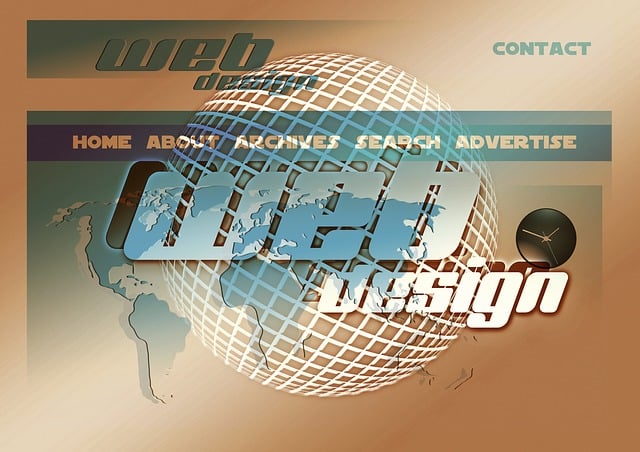Full-service web design offers businesses a comprehensive solution for establishing or enhancing their online presence by integrating various disciplines like graphic design, UX, development (front-end and back-end), SEO, content creation, and digital marketing. This approach ensures better control, consistent branding, and efficient project management throughout the lifecycle, delivering high-quality, user-centric platforms. Benefits include streamlined processes, reduced communication gaps, and consistent brand representation, but challenges include setting clear objectives and managing complex interdependencies. A successful strategy involves understanding target audiences, collaboration, Agile methodologies, regular testing, SEO integration, and measuring KPIs to ensure impact and ROI.
“Unleash the power of full-service web design and development—a comprehensive solution for businesses aiming to excel in the digital realm. This article delves into the intricacies of a holistic approach, exploring how dedicated teams transform ideas into vibrant online experiences. From conceptualization to launch, discover the vital roles of designers, developers, and project managers. Learn about the key components, benefits, and potential challenges of this strategy. By understanding the full spectrum, you’ll gain insights for successful implementation and measurement, ensuring your web design projects leave a lasting digital footprint.”
Understanding Full-Service Web Design: A Comprehensive Approach

Full-service web design encompasses a comprehensive range of services, from initial concept and planning to final launch and ongoing maintenance. It is a one-stop solution for businesses aiming to establish or enhance their online presence. This holistic approach integrates various disciplines, including graphic design, user experience (UX) design, front-end development, back-end development, search engine optimization (SEO), content creation, and digital marketing strategies.
By offering all these services under one roof, a full-service web design agency ensures seamless collaboration and coordination throughout the entire project lifecycle. This streamlined process allows for better control, consistent branding, and more efficient project management. It enables businesses to focus on their core competencies while leveraging the expertise of specialists in each field, ultimately resulting in a high-quality, user-centric, and successful online platform.
The Role of a Full-Scale Development Team

A full-scale web design and development team acts as a powerhouse, orchestrating every aspect of bringing your online vision to life. These teams offer a comprehensive suite of services, from initial concept and planning to final launch and ongoing maintenance—all under one roof. By consolidating resources and expertise, they ensure seamless integration across various disciplines, including graphic design, front-end development, back-end engineering, content management, and quality assurance testing.
This streamlined approach is particularly beneficial for businesses seeking a unified, cohesive digital presence. A full-service web design team can translate your brand identity into an engaging user experience, crafting intuitive navigation, visually appealing layouts, and responsive designs that adapt to various devices and screen sizes. Their expertise extends to implementing robust e-commerce solutions, integrating third-party services, and optimizing websites for search engines—all tailored to meet your unique business needs.
Key Components of an Effective Full-Stack Solution

In the realm of full-service web design, an effective solution isn’t just about aesthetics; it’s a harmonious blend of front-end and back-end technologies, seamlessly integrated to create robust online experiences. The key components include responsive design that adapts to various devices and screen sizes, ensuring accessibility and usability across the board. A robust content management system (CMS) allows for easy updates and management of website content, empowering clients to keep their sites current and engaging.
Moreover, a secure and scalable back-end infrastructure is paramount. This involves robust database management, secure server configurations, and efficient coding practices to handle increasing traffic and data without compromising performance or security. Integration with third-party tools and APIs expands functionality, enabling features like e-commerce capabilities, social media connectivity, and advanced analytics. Ultimately, a full-stack solution should be tailored to the client’s unique needs, delivering both style and substance in the digital landscape.
Benefits and Challenges of Going the Full Mile

Choosing a full-service web design approach offers numerous advantages for businesses aiming to establish or enhance their online presence. This comprehensive strategy involves integrating multiple aspects of digital marketing, from initial concept creation and graphic design to coding, content management systems (CMS), and search engine optimization (SEO). By delegating all these tasks to a single agency or team, companies can benefit from streamlined processes, reduced communication gaps, and consistent brand representation across various digital touchpoints. This holistic method ensures that the final product meets both aesthetic and functional expectations, providing users with an engaging, user-friendly experience.
However, embarking on a full-scale web design and development journey also presents certain challenges. These include setting clear objectives and expectations from the outset to avoid misalignment between clients and service providers. The complexity of managing multiple interdependent components can lead to delays or budget overruns if not carefully monitored. Additionally, keeping up with rapidly evolving technologies and design trends demands continuous learning and adaptation for both designers and developers. Despite these challenges, a well-planned full-service web design strategy remains a powerful tool for businesses seeking to make a significant impact in the digital realm.
Strategies for Successful Implementation

Implementing a successful full-service web design strategy requires a thoughtful, multi-faceted approach. It begins with understanding your target audience and their unique needs and preferences. A comprehensive user experience (UX) audit is essential to identify pain points and opportunities for improvement in existing websites. This involves analyzing user behavior patterns, gathering feedback, and conducting usability tests to ensure the new design caters to both aesthetic appeal and practical functionality.
Collaboration between designers, developers, and project managers is pivotal. Seamless communication channels and well-defined project milestones facilitate a cohesive workflow. Incorporating agile methodologies allows for iterative development, enabling rapid responses to evolving market trends and client feedback. Regular testing across various devices and browsers ensures optimal performance and accessibility. Additionally, integrating search engine optimization (SEO) best practices from the outset enhances online visibility and drives organic traffic to the newly launched website.
Measuring Success: KPIs for Full-Service Web Projects

Measuring success in full-service web design and development projects is crucial for gauging the impact and ROI (return on investment). Key Performance Indicators (KPIs) serve as metrics to evaluate progress and determine whether the website achieves its business objectives. These KPIs can include traffic growth, conversion rates, user engagement (time spent on site, bounce rate), search engine rankings, and social media interaction. By tracking these indicators, web design teams can identify areas of improvement, make data-driven decisions, and ensure the website remains competitive in the digital landscape.
For full-service web projects, it’s essential to align KPIs with the client’s goals, whether that’s increasing online sales, generating leads, or enhancing brand awareness. Regular monitoring and analysis enable designers and developers to refine strategies, optimize user experiences, and deliver a high-performing website that drives business success.
